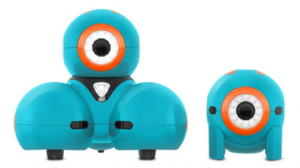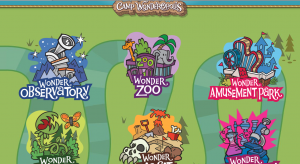Dash and Dot are introducing young students to robotics and coding. Schools around the world and here in Western Australia are using these cute little critters to revolutionise learning with a focus on STEM. Five free Apps are available for use on iPads and Android devices, with more Apps on the way! This fun and engaging curriculum would make a great investment for any school with students from Kindergarten to Year 5 able to use Dash and Dot with ease.
Today, we will be looking at Dash who has been described as a child’s first real robot friend. In this digital world, Dash is helping students to understand more about coding, to think creatively and critically, as well as to explore and learn for themselves how things around them work.
Using the ‘Path’ App, students can plan, program and execute awesome adventures for Dash drawing on concepts fundamental to computational and systems thinking (“Path”, n.d.). Students learn:
- Algorithm design
- Command sequences
- Control flow
- Sensors and Events
- Problem solving
Subject: Digital Technologies
Year Level: Year 5
Strand: Processes and production skills
Sub strand: Digital Implementation
Content Descriptor: Design, follow and represent diagrammatically, a simple sequence of steps (algorithm), involving branching (decisions) and iteration (repetition) (ACTDIP019)
Cross curriculum priorities and general capabilities: Literacy (LIT), Numeracy (NUM), Critical and creative thinking (CCT), Information and Communication Technology (ICT)
Links to other learning areas: Maths
A classroom activity using this resource: Using Dash, students will design and sequence algorithms that include lights, sounds and moves. They will plan and consider the different locations that Dash will visit using a coordinate grid. Students will then problem solve the distances and movements required by Dash – forward and backwards, left to right – to travel successfully on the coordinate grid. They will also use systems thinking to find solutions to any problems they can not solve. (Eckstein, n.d.)
Links to the resource:
Video Review:
(TTPM Toy Reviews, 2015)
How to use this resource:
This resource can be integrated successfully in several learning areas including the Arts, Science, Geography, Literacy and Numeracy. For example:
- Students can use their imagainations to write about the adventures of Dash and Dot.
- Students, Dash and Dot can also discover the countries of the world.
- Students can teach Dash and Dot to dance and make music.
Other considerations:
- Whole school approach to coding which can be used in all year levels from K-5
- A wide range of accessories to support different ages of students and their abilities
- Five free Apps with more on the way
- Teachers can access ready made and trailed lesson plans
- Teachers share their lesson plans with others in the teacher portal
- Strong links to STEM
- Opportunities for students to move beyond substitution, augmentation and modification
- Redefine student learning with access to the student portal in which students can participate in clubs, challenges and contribute their own work
References:
School Curriculum and Standards Authority [ACARA]. (2016) Digital Technologies. Retrieved from http://k10outline.scsa.wa.edu.au/home/p-10-curriculum/curriculum-browser/technologies/digital-technologies2
Eckstein, M. (n.d). Coordinate Moves with Dash. Retrieved from https://teachers.makewonder.com/lessons/coordinate-moves-with-dash
Path. (n.d). Retrieved from https://www.makewonder.com/apps/path
TTPM Toy Reviews. (2015, June 9). Path App from Wonder Workshop [Video file]. Retrieved from https://www.youtube.com/watch?v=b7ZrxtjsHKk




